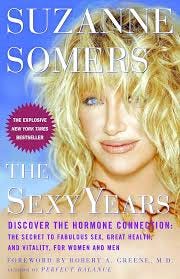🩺 The Nuns, the Mares & the Menopause Miracle
and the 23-Year Apology
Did you know that one of the most prescribed drugs in American history came from pregnant mares’ urine — and was once refined by Catholic nuns?
That drug was Premarin, short for PREgnant MARes’ urINe.
For decades it was medicine’s miracle for menopause — easing hot flashes, night sweats, and dryness. It helped women sleep, think, and feel like themselves again.
Then came the scandal — and the silence.
🔹 From Abbey to Apothecary
In the 1930s, researchers at Ayerst Laboratories in Canada discovered that pregnant horses produced urine rich in conjugated estrogens. Those compounds could be extracted and stabilized into a reliable oral medication.
To refine those early extracts, Ayerst turned to an unlikely partner: the Sisters of the Precious Blood, a cloistered order of nuns in Ontario.
These sisters were known for their careful and meticulous work. They had done laboratory work before, as well as making killer sacramental breads. Maybe not as great as the hippies did.
Inside their abbey, the sisters carefully filtered, dried, and purified the estrogen-rich material. Faith, chemistry, and healing — all in one story.
By 1941, Premarin was patented. Within two decades it was prescribed to millions of women. Doctors promised it would keep them “feminine forever.” Estrogen therapy became a cultural phenomenon — part science, part myth, part marketing.
🔹 The Fall from Grace
Everything changed in 2002.
The Women’s Health Initiative (WHI) reported that women on systemic hormone therapy — particularly Prempro (Premarin + synthetic progestin Provera) — had higher risks of breast cancer, stroke, and blood clots.
The FDA reacted with its harshest measure: a black-box warning on every form of estrogen — even low-dose vaginal creams and tablets that never carried those same risks.
The result? Prescriptions crashed. Physicians stopped prescribing. Women were told to “just live with it.”
An awful chapter in America.
🔹 The Underground Rebellion — and Suzanne Somers
Into that vacuum stepped Suzanne Somers.
Best known for Three’s Company, she became the face of the bioidentical-hormone revolution. Her 2004 book The Sexy Years promised women renewed vitality, energy, and sensuality through customized hormone therapy.
She wasn’t wrong about the problem — medicine had failed women — but the solutions often went off-script. Clinics began offering hormone pellets implanted under the skin, promising a steady “natural” release.
Here’s what we now know:
Pellets deliver estrogen or testosterone, but the release rate is unpredictable.
Once inserted, the dose can’t be adjusted.
And they’re far more expensive than FDA-approved options that are safer, covered by insurance, and easily titrated.
Today, we don’t recommend pellets for menopause management — not because women don’t deserve relief, but because we finally have better, safer, more precise ways to provide it.
Still, Somers mattered. She became the underground voice for women who refused to be told to “tough it out.” She filled the silence that medicine had left.
🔹 The Comeback
Now, 23 years after the black-box warning first appeared, the FDA, under Dr. Martin Makary, a surgeon, has finally removed it. That was the news you may have heard today.
The agency now recognizes that localized, low-dose estrogen (like vaginal creams, tablets, and rings) are not the same as systemic therapy. Risks for estrogen must be individualized.
It’s a small bureaucratic change with enormous human meaning.
A long-overdue correction that says:
We see you. We learned. We overreacted.
And to every woman who suffered needlessly through that silence:
medicine owes you a huge apology.
🔹 A Surgeon’s Perspective
As a surgeon, I’m fascinated by how medicine evolves — and how often it overcorrects before finding balance.
Sometimes it takes a surgeon to cut through the nonsense.
And yes, I’m currently filming a new series in Edinburgh, the birthplace of modern surgery, exploring how bold, brilliant, and sometimes bizarre minds built the medicine we practice today.
Because the story of Premarin isn’t just about hormones. It’s about humility, and about how progress requires us to look back at our mistakes before we move forward.
Something, by the way, that science does well. Data over dogma, new evidence, we change. Things that remain the same yesterday, today, and forever are the hucksters clarion call.
🔹 What’s Next
Now that the FDA has corrected its course on hormone therapy, it’s time to look at another outdated warning; statins and dementia.
The last 40 studies (including PMID 34871380) show that statins reduce dementia risk by up to 20 percent.
It’s time that label caught up to the evidence.
Because if this story proves anything, it’s that medicine does move — slowly, painfully sometimes — but always toward truth.
💡 For Paid Subscribers: The Science Beneath the Story
(Public Intro)
If you’ve read this far, you already care about how science evolves — and how sometimes fear and evidence trade places before the truth settles in.
This is where my paid subscribers get the deeper look behind the headlines:
the original studies and FDA data behind policy shifts,
how modern hormone formulations differ from the old ones,
what clinicians are already doing before regulators catch up,
and the next controversies that will shape how we age, heal, and eat.
👉 Upgrade to a paid subscription for the rest of this story and future deep dives.





